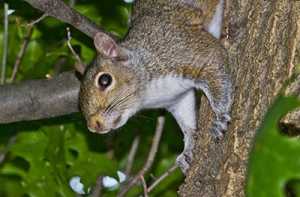Early Americans Panicked In Response To The Mysterious And Massive Squirrel Invasions That Occasionally Swept The Country
Humans and squirrels have been peacefully coexisting within a shared living space for well over a century in America. Considering the omnipresence of squirrels within urban and residential areas, it can be easy to forget that they are wild animals. As far as contemporary Americans are concerned, squirrels are a benign animal presence in urban landscapes, and it is difficult to imagine an American landscape without them. Even the most senior of American citizens remember encountering squirrels regularly as children. However, Americans have not always considered squirrels to be harmless creatures. In fact, during the early to mid 1800s, American political officials organized campaigns to eradicate squirrels from urban areas. During America’s early years, citizens considered squirrels to be just as threatening as any other disease-spreading animal.
In 1901, a lawyer named Augustus F. Shirts, decided to write a book detailing the lives of early American pioneers in America. One section of the book describes a massive countrywide migration of squirrels that occurred during the year of 1826. According to Shirts, a seemingly infinite number of squirrels migrated aggressively from the west of the country to the east. The squirrels destroyed every corn crop they trampled through, and their eastward migration was not even halted by the many lakes and rivers in their path. When the squirrel hoard reached the White River, spectators were amazed to see the squirrels swimming across the river with success. Unfortunately, once the squirrels began crossing the river, numerous American citizens began shooting, clubbing and stoning the squirrels to death due to fears that the squirrels would destroy cropland and spread disease. For decades, this story was considered a piece of American folklore, but several other documented eyewitness testimonies lend credence to this sensational account of large-scale squirrel slaughter.
One of the most renowned American naturalists of all time, John James Audubon, described four separate squirrel migrations in detail. Audubon was also impressed with the squirrels’ ability to swim across the Ohio and Hudson Rivers. The last notable squirrel migrations occurred during 1968 and 1985, but these migrations were not as large in scale as the ones that occurred during the prior century. Modern scientists believe that past squirrel migrations were comparatively large because their population size was much greater back then than it is today. Also, the squirrels that migrated during the 1800s and before were reacting to the sudden loss of their natural forested habitat. This habitat loss occurred rapidly due to the activities of early American logging industries. Modern squirrels have adapted to living in both natural and urban areas, making these dramatic population migrations a thing of the past.
Do you believe that other wild animals will become just as acclimated to urban environments as squirrels are now if natural animal habitats continue to disappear?






